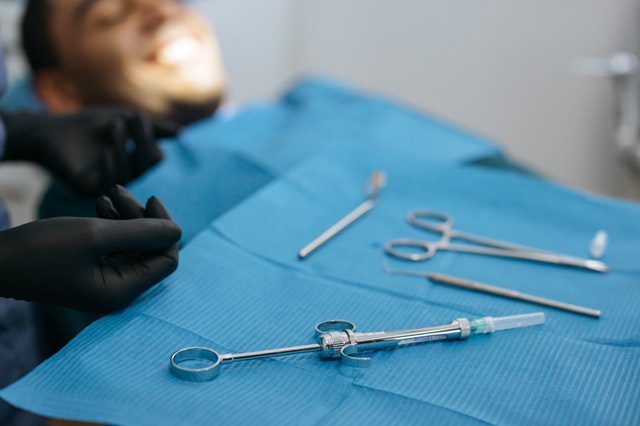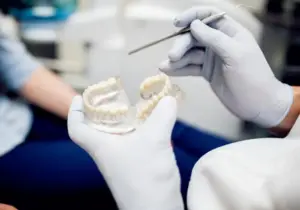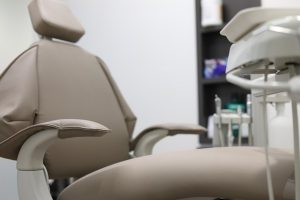Dental anxiety isn’t an uncommon phobia. Plenty of people are affected by it every year when they pay a visit to their dentist or a local oral surgeon. Dental anxiety comes in all forms and shapes, but one of the most prevalent ones is anxiety related to sedation for oral surgery.
Sedation methods in oral surgery are used to keep patients calm, comfortable, and numb during especially intensive mouth procedures. Even though the intent is to keep patients safe, it doesn’t always stop anxiety from creeping in. Thankfully, when anesthesia is used for dental surgeries, your dental team closely monitors your vital signs. Vital sign monitoring is important to maintain patient safety and ease any anxieties. By keeping a close eye on a patient who’s under the effects of an anesthetic administered for oral surgeries, dental surgeons are able to mitigate complications that might come from the sedatives.
Understanding Sedation in Oral Surgery
Before we talk about how and why we monitor patient vital signs when they’re under sedatives that are given by dental surgeons, we have to understand the anesthetics that are commonly used in oral surgeries. The main types of mouth operation anesthetics are as follows:
- Local anesthesia: This type of anesthesia is used to numb one specific area of the body. This is not a sedative in the traditional sense; however, it is used alongside other sedatives.
- Nitrous oxide: Commonly referred to as laughing gas. This dental surgery sedative is administered via a mask. It provides a feeling of relaxation and calm for the patient. Nitrous oxide wears off quickly, allowing patients to resume normal activities the same day.
- Oral sedation: This is a pill taken prior to surgery. Patients experience mild to moderate drowsiness and reduced anxiety.
- IV sedation: As the name suggests, IV sedatives used in mouth surgery are administered intravenously. Patients reach a deeper level of sedation and may even have amnesia, being unable to remember the surgery. This type of sedative requires close monitoring.
- General anesthesia: Most people think of this when they think of anesthesia. This is the kind that causes total unconsciousness. We save general anesthesia for complicated oral surgeries or lengthy procedures. It requires specialized training to administer, and the patient must have their vital signs monitored.
Oral surgeons use sedatives for different reasons. Most commonly, they’re used for dental anxiety or for patients with a severe phobia of the dentist. They’re also frequently used for complex procedures where the patient wouldn’t want to be fully awake anyways. In certain situations, they’re used on patients with special needs and those who have gag reflex issues.
The Importance of Vital Sign Monitoring with Sedative Medications in Oral Surgeries
During your oral operation, the dentistry surgeon you’re visiting will monitor various vitals when you’re under anesthesia. The following signs are closely watched during surgery:
- Heart rate
- Blood pressure
- Respiration rate
- Oxygen saturation
Keeping watch on patients’ vitals when they’re under the effect of sedatives used during dental operations is highly important. It allows your dental doctor to detect potentially adverse reactions well in advance. Even when sedation for oral surgery is carried out and administered perfectly, there’s still the chance that a patient might react.
During the procedure, your surgeon will keep an eye out for things like changes in heart rhythm, allergic reactions, or abnormal drops in blood pressure. Detected far enough in advance, most reactions are preventable when you’re working with a highly skilled oral surgeon.
How Do Surgeons Monitor Vitals During Sedation in Oral Surgeries?
Surgeons use a variety of tools at their disposal to keep patients who have taken anesthesia for dental operations safe.
For example, a pulse oximeter helps measure a patient’s oxygen levels. Most people are familiar with this device from seeing their doctor: it’s the tool that clips onto your index finger that analyzes your oxygen levels by detecting the amount of light absorbed by your blood. Certain sedatives that are commonly used in dental procedures are known to slow down breathing, which makes it critical to monitor oxygen levels.
Blood pressure cuffs, another device most are familiar with, are used to track any noticeable decreases in blood pressure. Sedation medication that is used in dental surgeries works by affecting the central nervous system. In turn, that can affect a patient’s heart rate and blood pressure.
The goal of your oral surgeon is to keep you as safe as possible during the entire procedure. Monitoring is a standard safety protocol that allows quick intervention to happen during a possible adverse reaction to sedation. It helps to provide a real-time assessment of a patient’s condition, and is crucial in keeping them safe.










